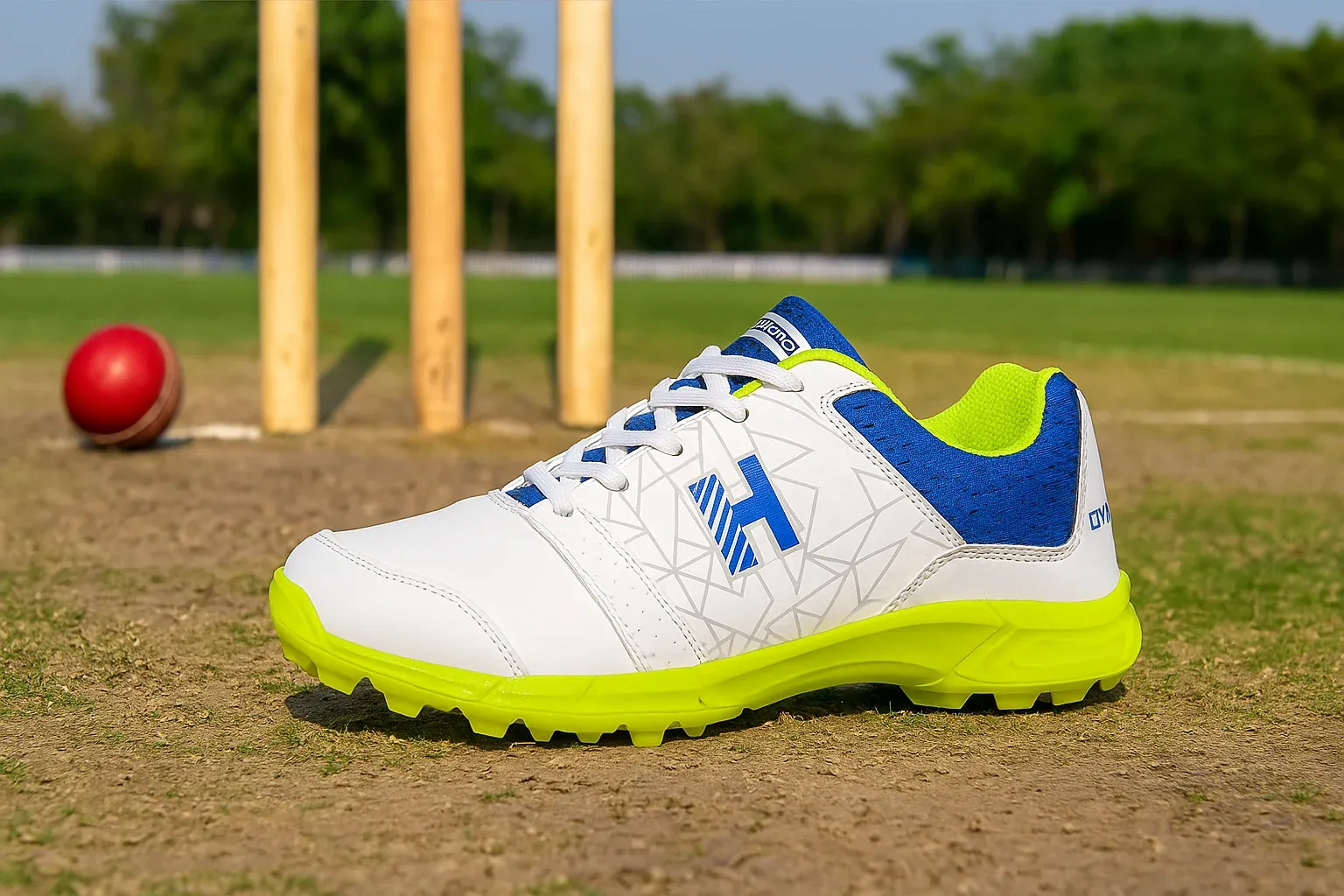
When we think of cricket gear, the focus usually falls on bats, pads, and gloves. But one of the most underrated pieces of equipment is the cricket shoe. A good pair doesn’t just complete your kit — it keeps you faster, stronger, and safer on the field.
Cricket demands hours of running, sudden sprints, lateral movements, and quick pivots. Wearing the wrong shoes can slow you down, cause injuries, and reduce your overall performance. Choosing the right pair, however, will help you run faster and play longer without fatigue.
This guide explains how to select the perfect cricket shoes for your playing style, ground conditions, and comfort needs.
Step 1: Understand the Role of Cricket Shoes
Unlike regular running shoes or sneakers, cricket shoes are designed to handle:
- Long match durations (sometimes 6–8 hours).
- Quick directional changes (for fielding, batting, or bowling).
- High-impact landings (especially for bowlers).
- Different pitch and ground conditions.
Think of them as specialized tools — just like a bat is designed to hit, shoes are engineered to protect your body while enhancing your movement.
Step 2: Know Your Playing Role
Different players need different shoes.
1. Batsmen
- Require lightweight shoes with good cushioning.
- Need stability for long innings and quick singles.
- Preferred choice: rubber sole shoes or lightweight spike shoes.
2. Bowlers
- Need extra support, especially in the heel area.
- Require shoes with reinforced cushioning for shock absorption.
- Spikes in the front help grip during run-up and landing.
3. Fielders & All-Rounders
- Require versatile shoes with both comfort and durability.
- Must handle sudden movements and extended running.
- Preferred choice: hybrid shoes with a mix of rubber and spikes.
👉 Knowing your role will immediately narrow down the type of shoe you need.
Step 3: Types of Cricket Shoe Soles
Choosing the right sole is essential because ground conditions vary.
Spiked Shoes
- Metal spikes: Provide excellent grip, used mainly by bowlers and professional players.
- Rubber spikes: Lighter, better for synthetic turf or concrete wickets.
Rubber-Sole Shoes
- More affordable and versatile.
- Great for beginners and practice sessions.
- Work best on dry, hard pitches.
Hybrid Shoes
- Combine rubber and spikes for all-round performance.
- Suitable for players who switch roles frequently.
👉 Rule of thumb: Spikes for grass, rubber for turf.
Step 4: Comfort and Fit
No matter how advanced a shoe is, if it doesn’t fit right, it’s useless.
- Snug, Not Tight: Shoes should fit snugly without squeezing your feet.
- Breathable Material: Mesh uppers prevent sweat build-up and blisters.
- Cushioning: Look for EVA midsoles or gel-based cushioning to absorb shock.
- Ankle Support: Mid-cut designs are great for bowlers to prevent twisting.
A poorly fitted shoe can cause foot pain, shin splints, and even long-term injuries.
Step 5: Weight of the Shoe
- Lightweight Shoes: Perfect for batsmen and fielders who rely on speed.
- Medium-Weight Shoes: Ideal for all-rounders.
- Heavier Shoes with Extra Padding: Best for fast bowlers to reduce impact stress.
Think about your role: A bowler may sacrifice lightness for safety, while a batsman might prefer ultra-light shoes for agility.
Step 6: Durability
Cricket shoes face a lot of wear and tear. To ensure longevity:
- Look for reinforced toe protection (especially for batsmen).
- Ensure the sole is stitched, not just glued.
- Check if the upper is synthetic leather or mesh with overlays — both are more durable than basic fabric.
Step 7: Top Mistakes to Avoid
- Wearing running shoes for cricket – They don’t provide stability for sideways movements.
- Ignoring ground conditions – Wrong sole choice means poor grip.
- Choosing the wrong size – Too loose = blisters, too tight = cramps.
- Neglecting cushioning – Leads to injuries, especially for bowlers.
- Not replacing worn-out shoes – Old soles lose grip and shock absorption.
Step 8: Maintenance Tips
To make your shoes last longer:
- Air-dry them after matches (never leave them wet).
- Clean spikes regularly to maintain grip.
- Use shoe bags to protect them from dirt and moisture.
- Replace worn-out insoles for continued comfort.
Step 9: Pro Recommendations
- Batsmen: Go for lightweight shoes with good front-foot grip and toe protection.
- Bowlers: Opt for shoes with heavy cushioning, reinforced heels, and strong spikes.
- All-Rounders: Hybrid shoes strike the best balance between agility and stability.
Conclusion
Your cricket shoes are more than just footwear — they’re a foundation for performance, endurance, and safety. Whether you’re sprinting between wickets, charging in as a fast bowler, or diving in the outfield, the right pair will help you run faster, play longer, and avoid injuries.
At Heega Sports, we stock a wide variety of cricket shoes for batsmen, bowlers, and all-rounders — from beginner-friendly rubber soles to professional-grade spiked shoes. Whatever your playing style, we’ve got the perfect fit waiting for you.